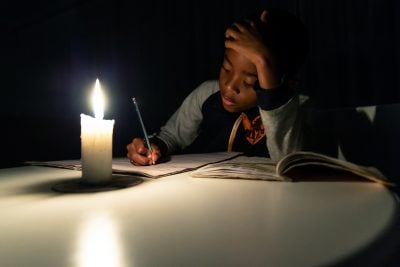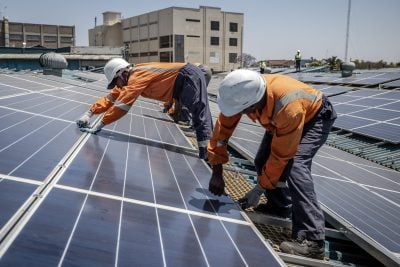Since 2015, scientists from the University of Oxford’s REACH water security programme have kept a close eye on Ethiopia’s Awash River Basin, a region encompassing 17% of the country’s population of 110m and 10% of its land area, in a bid to measure how climate change is impacting water availability.
Their conclusions make for sobering reading. “The basin will be hotter, drier and more water stressed. This could have severe consequences on human and economic development… Water availability will continue to decrease progressively until at least the end of the century,” wrote researchers Meron Teferi Taye and Ellen Dyer for academic website The Conversation.
They found that just a 5% decrease in rainfall could cause a 10% plunge in agricultural productivity, reducing GDP derived from the basin by 5%. Land degradation and a reduction in industrial crop production and small-scale farming will result, but the shortages could also decimate hydropower generation, which accounts for over 84% of Ethiopia’s electricity production.
With water scarcity extending well beyond the Awash River Basin, the trend could seriously hamper the country’s ambition to extend electricity supply to the 56% of the population currently without access to the grid or any other form of generation – some 60m people.
A prolonged dry period beginning in 2018 led to a power deficit of nearly 500 MW, government rationing, the suspension of exports, curbed industrial demand and rolling power cuts to residential customers.
Speaking to African Business, Belaynesh Birru, environment and climate change director at the Ministry of Water, Irrigation and Energy, says that water scarcity is forcing the government to augment its traditional dependence on hydropower with a new focus on renewable energy sources.
New focus on renewables
“Because of climate change we can’t use hydro throughout the year. When the season changes to summer, the temperatures [rise], there is no rainfall, the volume reduces and we can’t provide the water as before… so we are using renewable energies like solar, wind, and mini hydro. We have ample resources. We have a renewable energy master plan. The government gives priority to renewables, and now the private sector is involved in generating power from renewables.”
Ethiopia’s dependence on temperamental hydropower owes much to its location amid eight major river basins. The most famous of these, the Nile Basin, holds some 32% of Ethiopia’s land area and around 40% of its population. The basin is dominated by the Nile’s largest tributary, the Blue Nile, which flows from Ethiopia’s Lake Tana and joins the White Nile in Sudan, where it contributes about 85% of the water that makes up the main Nile.
Given its geographical proximity to the great river, hydropower dominates government thinking. Ethiopia plans to increase generating capacity by 25,000 MW by 2030 in an ambitious bid to achieve 100% electrification by 2025. 22,000 MW of that is earmarked for hydro, with 1,000 MW of geothermal and 3,000 MW of wind energy.
But under the country’s stated policy scenario by 2040, solar generation is expected to increase from just 1 Terawatt-hour (TWh) to 18 TWh, and other renewables will increase to 10 TWh from virtually nothing today. Aside from decreasing the dependence on scarce water, Birru says that a greater uptake of renewables will have financial benefits.
“Building dams is capital intensive. No one is supporting us to build these dams. It’s usually by government finance and loans. So generating power from solar and wind is better than building a dam. We have a lot of large and medium dams we’ve already constructed and we’ve generated about 4,800 MW. With the Grand Ethiopian Renaissance Dam, we’ll have 6,500 MW. So we’ll have around 11-12,000 MW, but that’s not enough for us. We need to generate power from wind and solar.”
The push for renewable energy generation will test prime minister Abiy Ahmed’s ambition to open the economy to foreign investment and his bid to “unleash the power of the private sector” after decades of state-led development.
Until recently, progress was piecemeal. As of 2018, Ethiopia had only made 22% progress towards its 2020 renewable target, according to the BloombergNEF. Power generation and transmission have historically been dominated by the state-owned Ethiopian Electric Power (EEP), but since 2017, the state has launched tenders to encourage foreign investors to build large-scale solar.
The government is also working with partners on geothermal energy, and Birru says that the involvement of the private sector is essential if renewables are to take off.
“The government gives priority for power generation from renewables and we know that without the involvement of the private sector we can’t have this. So we are working on public private partnerships. The EEP has a competitive bid system, we are giving all the chances to the private sector to participate and be involved in generation,” says Birru.
GERD controversy
Yet despite the encouraging moves to diversify energy supply, one controversial hydro mega-project continues to dominate the international conversation around Ethiopia’s energy future. Amid mounting concerns around water scarcity, the multi-billion dollar Grand Ethiopian Renaissance Dam (GERD) has stoked regional tensions with neighbouring Egypt and Sudan, who are concerned about the impact on their water supply.
The Blue Nile project has prompted mediation efforts by the US, but the Ethiopian government, for whom the project has become a question of national pride, argues that regional fears are unfounded. It says that the project will improve power supply and water sustainability for its neighbours, including Egypt, by conserving water that would evaporate elsewhere.
“The dam is not impacting Egypt, because when the Nile goes through their country, with the impact of high temperatures, [there will be] high evaporation,” says Birru. “When the dam is filled, they can get sustainable supply as before… They have a huge amount of groundwater, the Nile flow, they’re generating a lot of power. We need to support each other… we don’t do any harm to our neighbouring countries.
“We are Ethiopians, we know how people are suffering with shortages of water and power. We’re working for mutual benefit. Around 60% of our nation needs light, we need to use [the Nile]. We didn’t violate any rules and regulations. We are doing it properly, conserving the Nile basin. We’re planting a lot of trees, conserving to get more water.”
Transformative project
Despite her strong advocacy of renewables and fears for the future of hydro amid water scarcity, Birru says that the Grand Ethiopian Renaissance Dam is the transformative project the country needs.
“When it’s completed it will generate 6,500 MW, so it’s a huge amount. We’ll export that to neighbouring countries, to Kenya, Djibouti, Sudan, Egypt. From that we’ll get money and more job opportunities will be available. We will have a sustainable power supply for our industries. It’s a great opportunity for us, completing this Renaissance dam.”
Given the increasingly high stakes and amount of national prestige bound up in the controversial project, it remains to be seen whether the intense focus on the dam will distract from Ethiopia’s long-term intention to chip away at hydro’s dominance.
Belaynesh Birru is a scheduled speaker at the African Energy Forum, 20-22 October, Amsterdam.
Want to continue reading? Subscribe today.
You've read all your free articles for this month! Subscribe now to enjoy full access to our content.
Digital Monthly
£8.00 / month
Receive full unlimited access to our articles, opinions, podcasts and more.
Digital Yearly
£70.00 / year
Our best value offer - save £26 and gain access to all of our digital content for an entire year!
 Sign in with Google
Sign in with Google 


